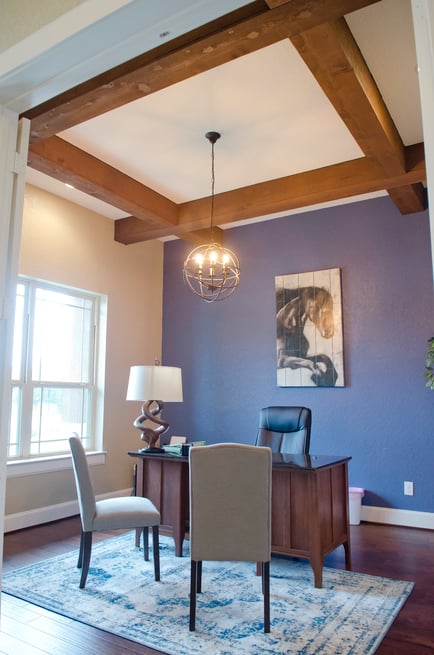Interior paint colors can significantly affect your mood and motivation, whether you’re in your home or office. The right colors can impress your guests and clients, while the wrong ones can cost you greatly when you sell your home.
This decision often begins by using the colors of your hard surfaces to guide your choice of paint color, including countertops, flooring, stone and tile. You must also decide on the color scheme, which can include warm, cool or neutral tones. Creating the right flow between rooms is another major challenge in your paint selection, especially when using multiple colors. Testing is also an important part of this process, since many variables affect the apparent color of paint.
 Hard Surfaces
Hard Surfaces
Many people choose the paint first and then decide on the décor, but you should perform these tasks in the opposite order. It’s much simpler to select your décor first and then choose the paint based on what you already have in the room. It’s especially important to ensure the paint matches hard surfaces like the floor and window blinds as well as the landscape. Assume for example that your home has large windows with a view of a blue ocean or green forest. These vivid colors can clash with your interior if you choose bright colors of the opposite hue.
Another consideration with hard surfaces is whether to use paint with a gloss or flat finish. A gloss finish is easier to clean since it’s less porous than a flat finish, but it also makes the flaws in your wall more obvious. Flat finishes are better at concealing imperfections in the surface and are particularly well-suited for ceilings. Paint your ceiling with a single coat of paint to ensure it is brighter than the surrounding walls.
Wood Stain
Picking out a stain for wood surfaces can get tricky. Cedar, maple, pine, and oak can all take on different colors with the same stain color. So testing on each surface is imperative. You also need to be mindful of your wood floor stain color - testing is key! You can layer stains to develop richer tones or add a glossy finish.
Tones
The colors for interior house paint may generally be classified into cool, warm and neutral tones. Cool tones consist of gray and white shades, while warm tones are antique whites and tans. Neutral tones include light beige. Lighting has a great effect on the color of the paint such that natural lighting is best able to show its true color. Incandescent lighting brings out warm tones, while fluorescent lighting makes colors appear cooler.
One of the latest decorating trends is to create contrast and depth by combining warm and cool tones. Accent colors on accessories and architectural details can also provide a unique background for your décor. Bear in mind that muted shades improve the resale value of your home since many people don’t like bright colors.
Flow
Paint colors should lead the viewer naturally from one space to the next. Several basic techniques exist for creating the flow color within a home. The easiest of these is to simply use one color throughout the home. You can also start with one color and flow toward progressively lighter or darker colors.
The most difficult method of creating flow is to select a group of colors that work well together for the entire house. Start with the central room in the house, which is usually the living room. Then you can move into the other rooms with different colors, if you wish, continuing a similar color scheme (warms, neutrals, cools).
Testing
Testing is critically important when selecting paint colors due to the expense of painting a house in the wrong color. Furthermore, the same color can look quite different after it dries, depending on the lighting and painting surface. Environmental conditions have such a great impact on paint color, so many companies offer tester paints to their customers, which is a small quantity of the actual paint. This testing method is better than traditional paint chips because you can observe what the paint will look like on the actual painting surface in the correct lighting.
Are you building your dream home? Contact Kurk Homes today to discuss how we can help!








